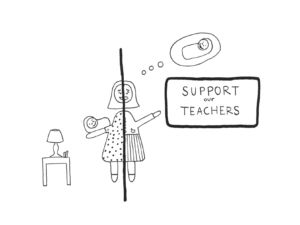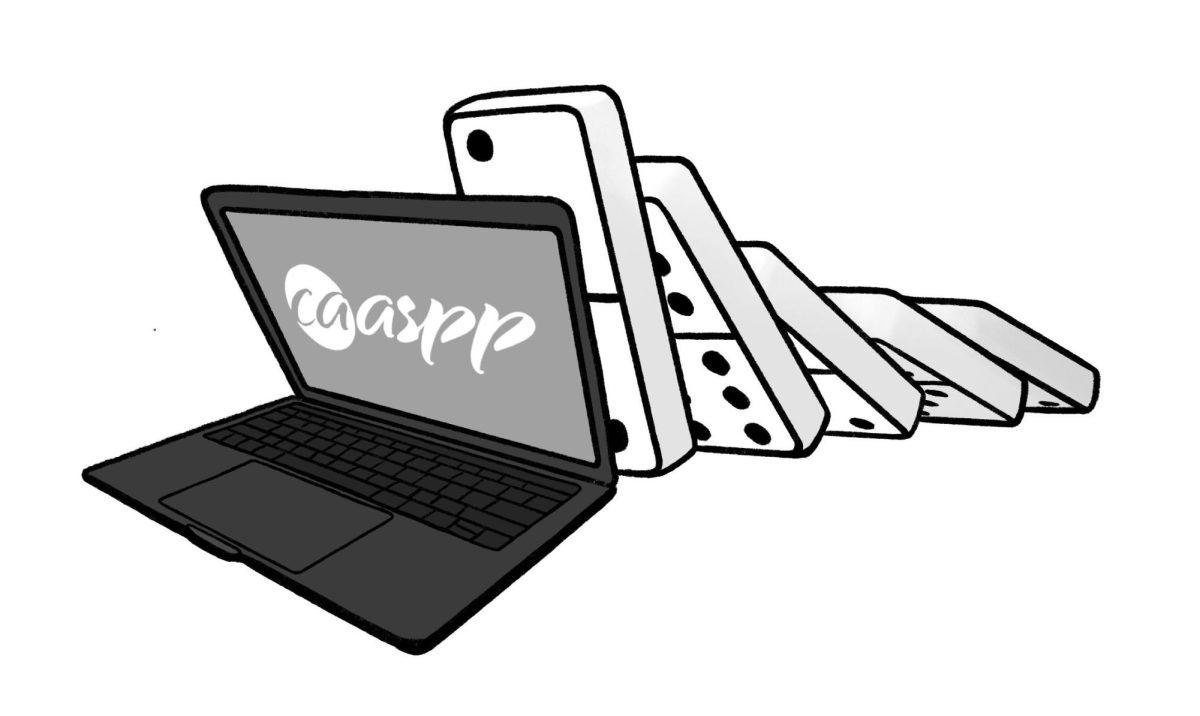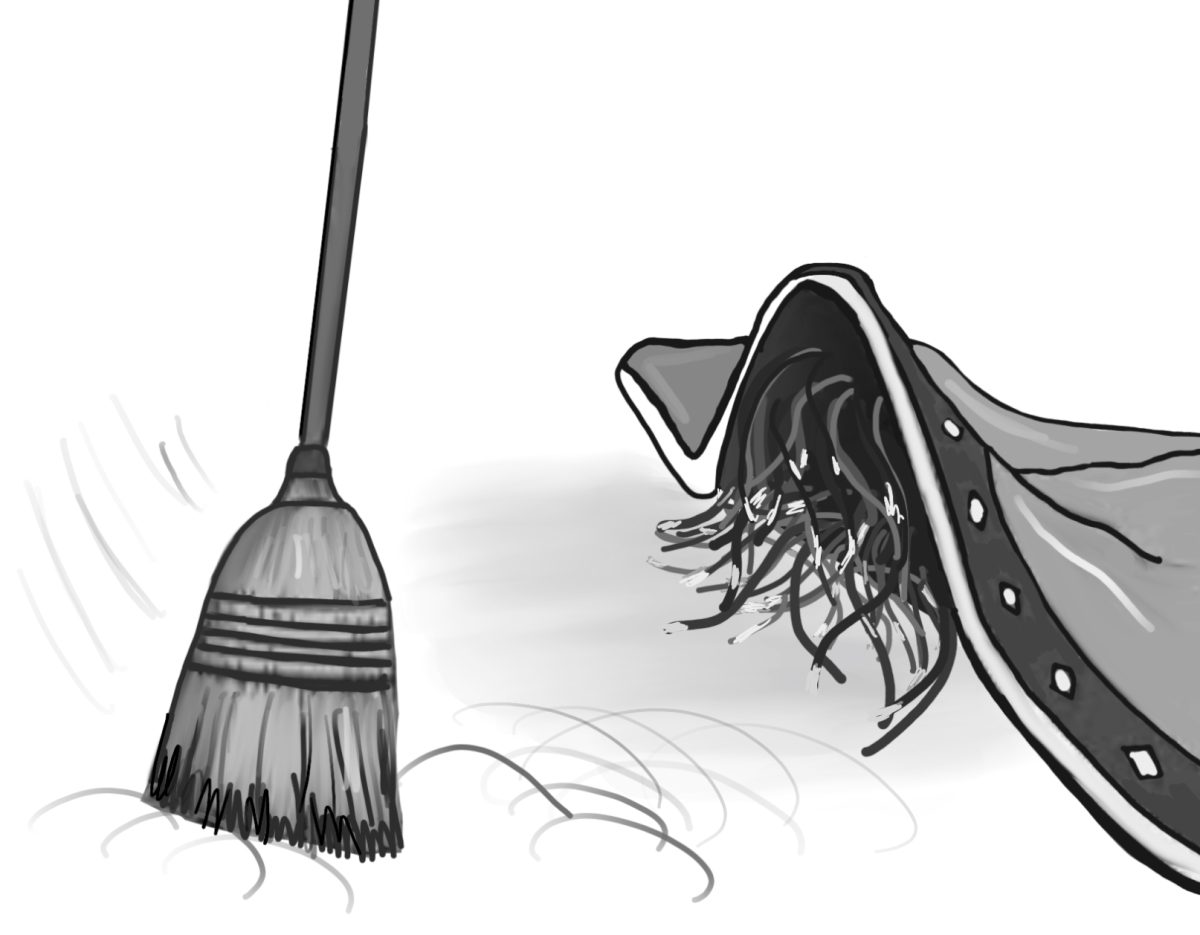The U.S. is one of only three countries in the entire world that does not mandate nationwide paid maternity leave, along with Papua New Guinea and Lesotho. Let that sink in. It’s almost unbelievable, but true.
Within the U.S., only three states offer partially paid maternity leave, including California, New Jersey and Rhode Island and only 11 percent of American workers get paid family leave through their employers or state programs, according to the Bureau of Labor Statistics.
The percentage of workers who don’t receive full-paid maternity leave, who aren’t adequately supported in their choice to have children, includes our Tamalpais High School District (TUHSD) teachers. The current TUHSD policy, while in accordance with California leave, still falls short of teachers’ needs. The only form of fully paid parental leave TUHSD teachers have access to comes in the form of accrued sick days.
The 10 sick days given annually to TUHSD employees are meant for just that: sick days. However, teachers must refrain from using them if they want paid time off for pre or postnatal care. The other option is that, Under the Family Medical Leave Act, teachers have access to six weeks of differential pay, or the dollar difference between hiring a teacher a substitute teacher. They are eligible for reduced pay for up to 60 days, after which they receive no salary. Teachers can also take multiple years off with no pay.

The deduction of sick days, in place of paid leave, is problematic for many reasons. First, it forces teachers to make difficult decisions about whether or not to come to work when they or their children are sick, a decision no one should be forced to make.
As students, we’ve all had to go to school sick, noses running and heads pounding. It’s incredibly distracting. Now imagine having to teach a class full of teenagers.
Secondly, upon retirement, teachers are paid for the sick days they didn’t take off. Not receiving this payout is another disadvantage for teachers who have used up sick days for maternity leave or childcare.
Why is it necessary to penalize teachers, especially women, who wish to start a family? Why, in a district that is continuously trying to improve the learning and emotional wellbeing of its students, does it reward teachers for teaching throughout their stressful pregnancies and returning to school as soon as possible?
In the education sector, the goal is to nurture children, promote their well-being and foster higher learning. It is shockingly hypocritical for schools not to provide that same level of care to employees and their children. According to the National Partnership for Women and Families, longer maternity leaves are linked to improved health in newborns. Mothers with paid maternity leave are proven to breastfeed longer and bring their newborn to more clinical check-ups. An extra 10 weeks of maternity leave can even lower the threat of mortality in newborn children by as much as five percent.
Additionally, paid maternity leave improves the mental health of new mothers. According to the Journal of Health Politics, Policy and Law, longer maternity leave corresponds to fewer depressive symptoms in postnatal mothers.
Teacher appreciation week is an opportune time to address the obstacles and personal challenges our teachers face. Teachers are critical to the education of future generations. They are mentors, advisers, coaches and friends. Thousands of dollars in funds are allocated each year in an attempt to increase student learning and wellbeing, including the newest forms of technology and days of free food, activities and speakers. But this push to increase wellness in schools, even if targeted at students, should be starting with teachers. If they aren’t fully supported themselves, how can they support us as students? Paid maternity leave, a policy dedicated to the most fundamental need of working families, is the next step in improving the wellness of our teachers and schools as a whole.
Last month, Governor Jerry Brown vetoed a law that would have required school districts to give teachers six weeks of paid leave. As the teacher’s union plans to bring up parental leave in negotiations with the district later this year, we encourage the district to seriously consider making changes to the current policy for the well-being of our teachers and their families.
The district’s concern for implementing paid leave is affordability, however, there are options to get around this. In New Jersey, paid leave programs are financed by deducting from the taxable wage base of employee payroll. The maximum deduction per year is $29, less than $1 per week, according to the New Jersey Department of Labor and Workforce Development. This would not only be an investment in our teachers’ lives, but our own.
Another solution is one that has been employed by our district recently. When two members of Redwood staff’s homes were destroyed in the recent wildfires, teachers pooled their extra sick days for these employees to use. A permanent pool of sick days for teachers with young children would provide a little bit of flexibility and relief for teachers who are strained under the current system.
There must be a major culture change when it comes to maternity leave in the United States. Schools are meant to support students, but this means supporting teachers as well. This change can start locally. It can start with the TUHSD.
























